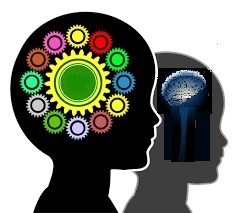
Arquivo para May 10th, 2018
Trends in Artificial Intelligence
By the late 1980s the promises and challenges of artificial intelligence seemed to crumble Hans Moracev’s  phrase: “It is easy to make computers display adult-level performance on intelligence tests or play checkers, and it is difficult or impossible to give them the one-year-old’s abilities when it comes to perception and mobility, “in his 1988 book” MInd Children. ”
phrase: “It is easy to make computers display adult-level performance on intelligence tests or play checkers, and it is difficult or impossible to give them the one-year-old’s abilities when it comes to perception and mobility, “in his 1988 book” MInd Children. ”
Also one of the greatest precursors of AI (Artificial Intelligence) Marvin Minsky and co-founder of the Laboratory of Artificial Intelligence, declared in the late 90s: “The history of AI is funny, because the first real deeds were beautiful things, a machine that made demonstrations in logic and did well in the course of calculation. But then, trying to make machines capable of answering questions about simple historical, machine … 1st. year of basic education. Today there is no machine that can achieve this. “(KAKU, 2001, p 131)
Minsky, along with another AI forerunner: Seymor Papert, came to glimpse a theory of The Society of Mind, which sought to explain how what we call intelligence could be a product of the interaction of non-intelligent parts, but the path of AI would be the other, both died in the year 2016 seeing the turn of the AI, without seeing the “society of the mind” emerge.
Thanks to a demand from the nascent Web whose data lacked “meaning,” AI’s work will join the efforts of Web designers to develop the so-called Semantic Web.
There were already devices softbots, or simply bots, software robots that navigated the raw data looking for “to capture some information,” in practice were scripts written for the Web or the Internet, which could now have a nobler function than stealing data.
The idea of intelligent agents has been revived, coming from fragments of code, it has a different function on the Web, that of tracking semi-structured data, storing them in differentiated databases, which are no longer Structured Query Language (SQL) but look for questions within the questions and answers that are made on the Web, then these banks are called No-SQL, and they will also serve as a basis for Big-Data.
The emerging challenge now is to build taxonomies and ontologies with this scattered, semi-structured Web information that is not always responding to a well-crafted questionnaire or logical reasoning within a clear formal construction.
In this context the linked data emerged, the idea of linking data of the resources in the Web, investigating them within the URI (Uniform Resource Identifier) that are the records and location of data in the Web.
The disturbing scenario in the late 1990s had a semantic turn in the 2000’s.
KAKU, M. (2008) The Physics of the Impossible: a scientific exploration of the world of fasers, force fields, teleportation, and time travel. NY: Doubleday.

